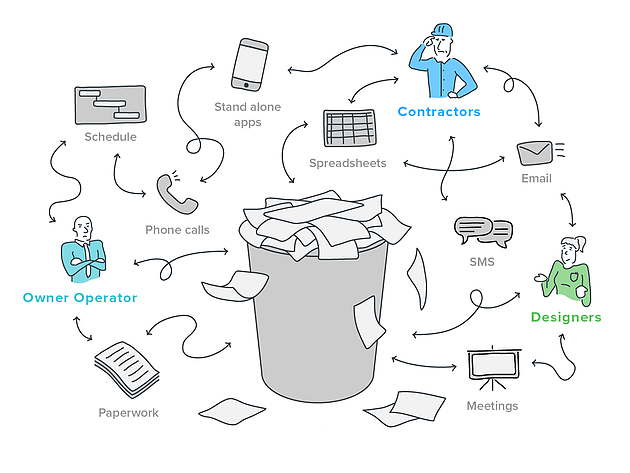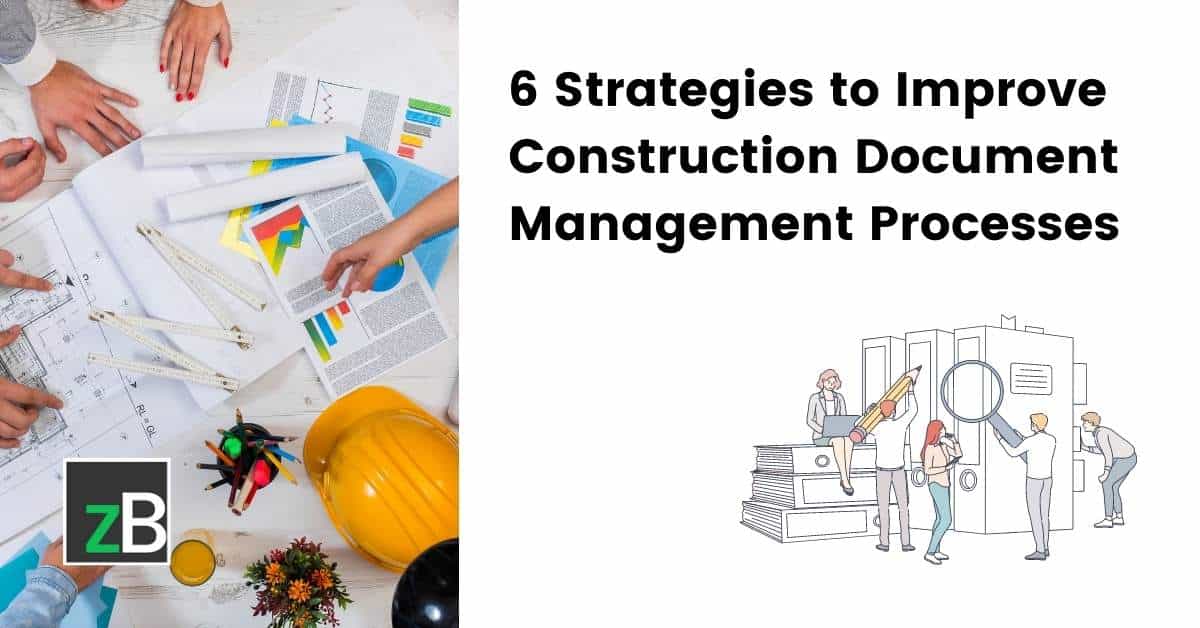Understanding Organization: Boost Efficiency with Construction Document Management
Understanding Organization: Boost Efficiency with Construction Document Management
Blog Article
Optimizing Job Collaboration: Engineer's Finest Practices in Construction Paper Management
In the intricate realm of architectural jobs, the effective monitoring of building and construction records stands as a cornerstone for success. Amidst this complexity exists a crucial question: how can architects streamline collaboration procedures to boost task end results?
Leveraging Cloud-Based Platforms
Leveraging cloud-based platforms is an essential strategy for modern-day designers in optimizing building file management procedures. By transitioning from conventional paper-based systems to cloud options, engineers can enhance collaboration, boost file accessibility, and improve overall task efficiency. Cloud-based platforms supply designers the capability to shop, share, and update building documents in real-time, making sure that all staff member have accessibility to the most current info no matter their location. This accessibility advertises seamless communication and control among project stakeholders, bring about less errors and delays in the building and construction process.
Furthermore, cloud-based systems offer a safe and secure atmosphere for saving sensitive task details, using security, routine back-ups, and user authorization settings to secure information stability. Engineers can also take advantage of the scalability of cloud remedies, permitting them to change storage space capacity and performance based upon project demands. On the whole, leveraging cloud-based platforms equips engineers to optimize their building record management processes, driving higher cooperation, performance, and success in their projects.
Executing Variation Control Equipment
Having actually established the benefits of cloud-based platforms in building paper monitoring, architects can now improve their paper control procedures by applying Version Control Systems. Version Control Systems (VCS) are necessary devices that track changes in files, making sure that group participants are constantly functioning with the most up to date and most exact details. By applying VCS, engineers can keep a central database where all project documents are stored, enabling seamless collaboration while decreasing the threat of mistakes and variation disputes.
One secret advantage of Version Control Systems is the capacity to track the total history of paper changes, allowing users to return to previous versions if needed (construction document management). This attribute is particularly important in building projects where style iterations and modifications prevail. Moreover, VCS helps with far better interaction amongst team participants by providing a clear audit route of that made details adjustments and when they were made. This transparency not just enhances accountability yet likewise helps in settling conflicts or discrepancies that might occur throughout the project lifecycle.
Developing Communication Methods
To ensure effective and effective project sychronisation, engineers must establish clear and durable interaction protocols within their building record management processes. Interaction protocols define the techniques, regularity, and networks whereby staff member exchange details, updates, and feedback. One vital facet of establishing these protocols is identifying a central interaction system where all project-related conversations and document sharing can occur. This platform might be a task monitoring software program, email threads, or cloud-based storage services. By establishing standards on just how details is disseminated and how employee interact with each various other, go to my blog engineers can simplify the flow of data and avoid miscommunications or delays in the building process.
Moreover, communication protocols ought to likewise include guidelines on how to take care of problems, modification orders, and urgent issues that might emerge throughout the job lifecycle. Establishing a structured approach to communication makes certain that all stakeholders get on the exact same page, promotes openness, and eventually adds to the successful conclusion of the building task.
Using BIM Software Application for Coordination
BIM software program plays a critical role in boosting control amongst job staff member in the building and construction sector. Building Info Modeling (BIM) promotes collaboration by giving a centralized platform where designers, engineers, service providers, and various other stakeholders can interact in a coordinated fashion. Through BIM software program, project individuals can access and update a shared version which contains detailed info concerning the building style, construction elements, and task routines.

Moreover, BIM software application makes it possible for real-time cooperation and interaction amongst group members, no matter their physical place. Through cloud-based BIM systems, job stakeholders can access the current project info, track changes, and make educated decisions without delay. Generally, leveraging BIM software for control enhances job efficiency, efficiency, and ultimately causes successful job end results.
Ensuring Data Protection and Compliance
In the world of construction paper monitoring, protecting information integrity and making sure governing conformity are critical factors to consider for architects and other task stakeholders. Architects should apply robust safety and security actions to protect sensitive job details from unauthorized gain access to or violations. Making use of secure cloud storage options with security protocols and access controls can assist alleviate threats linked with data theft YOURURL.com or loss. Regularly updating software and systems, performing safety audits, and giving team training on information security best methods are necessary actions in keeping a safe and secure environment for construction file administration.

Conclusion
To conclude, designers can optimize task collaboration in building and construction paper administration by leveraging cloud-based platforms, applying version control systems, developing interaction methods, using BIM software application for sychronisation, and ensuring read here information security and conformity. These best techniques help simplify the building procedure, improve interaction among job stakeholders, and boost effectiveness in task shipment. By complying with these guidelines, engineers can efficiently take care of building records and help with effective project results.
Through BIM software program, job individuals can access and update a common version that includes thorough information regarding the building style, construction elements, and project routines.
With cloud-based BIM systems, project stakeholders can access the most recent project info, track adjustments, and make informed decisions quickly - construction document management. In general, leveraging BIM software program for sychronisation boosts task efficiency, performance, and inevitably leads to effective task results
In conclusion, architects can enhance job cooperation in building and construction record monitoring by leveraging cloud-based systems, carrying out variation control systems, developing interaction methods, using BIM software application for coordination, and ensuring information safety and compliance. These finest practices aid enhance the building procedure, enhance communication amongst job stakeholders, and enhance performance in job delivery.
Report this page